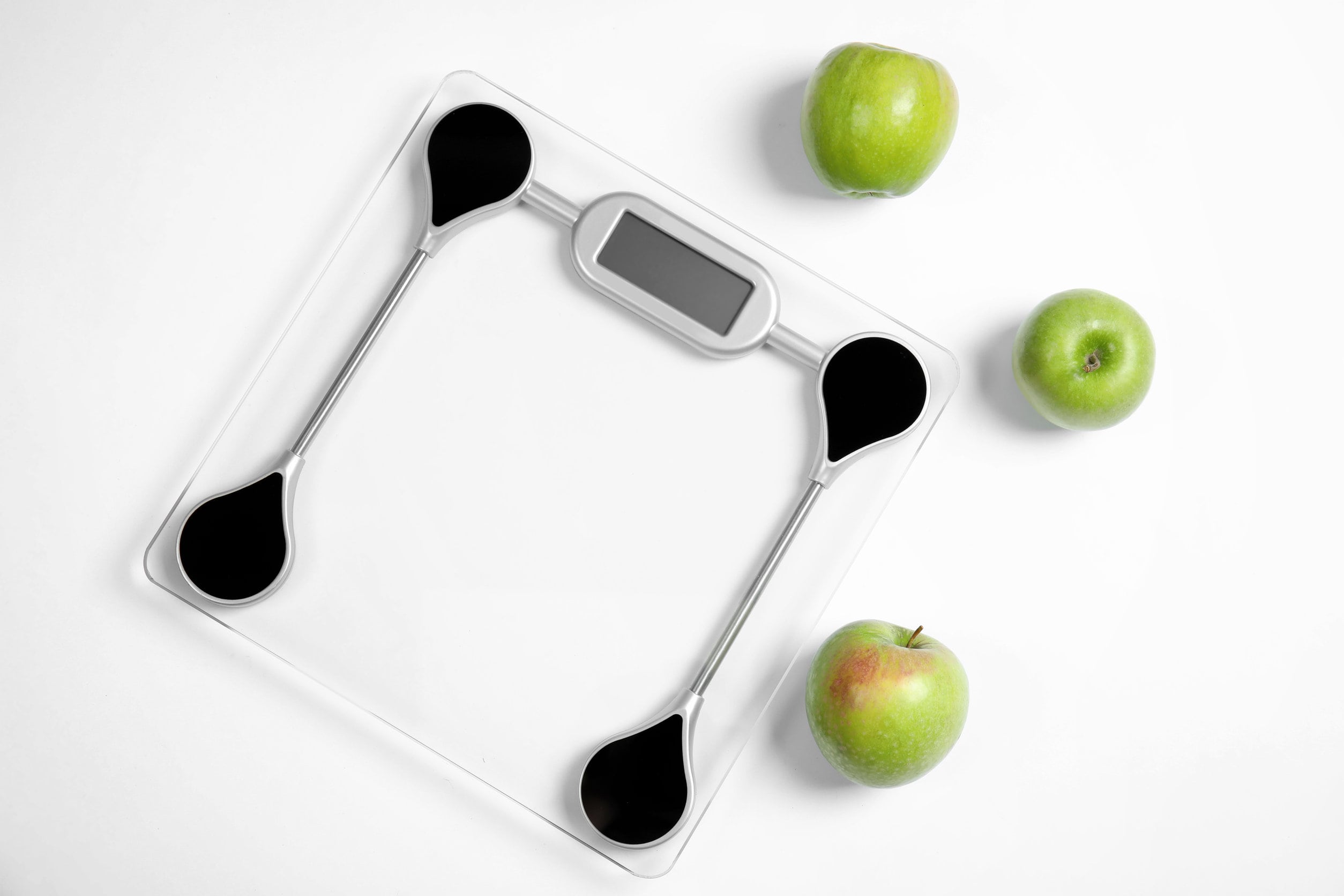This article covers some background on body composition, why it matters, and the pros and cons on the most common methods to measure body composition.
What does body composition mean?
Body composition refers to the relative proportions of body weight, usually divided into lean body mass, water and fat mass. Lean body mass is further divided into: muscle, bone, organs and connective tissue.
Why weight alone may not suffice….
Weight alone does not tell you a lot – how much of that is fat, muscle, water and bone mass? This matters when it comes to health since we know that muscle mass has so many beneficial associations, from increased health to increased longevity. Bone mass too has many beneficial associations, as an important predictor of life span.
Additionally, for most athletes, weight alone is not a sufficient indicator of body composition. Understanding what your body weight is made up of may matter for both health and performance reasons.
Why body mass index (BMI) may not suffice….
Body mass index (body mass index), the value of body weight over the height of an individual, is commonly used to screen for weights which are further away from the average – mainly for individuals who are very overweight (BMI > 25), and also for individuals who are underweight (BMI < 18.5). The assumptions of the BMI guidelines are that BMI is closely associated with body fatness, subsequent poor health, and increased mortality (Gallagher et al. 2000). However, some individuals who are overweight, are not overfat – for example body builders. Similarly, others have a normal BMI but have a higher percentage of body weight as fat and may therefore be at increased health risk.
Body fatness and health markers may also vary considerably between ethnicities for a given BMI. Various research reports this difference between Asian, African and Caucasians (Ramel et al. 2013). For example, a study showed that African American women with the same BMI as white women were found to have considerably better health markers such as blood pressure and cholesterol levels (Katzmarzyk et al. 2012). Additionally, another study showed that Asians were at a much greater risk of developing obesity related illnesses at lower BMIs than Caucasians (Wen et al. 2009).
The measurement of BMI may not therefore indicate much about an individual’s actual body composition. Two people may have the same height and weight and therefore BMI but have very different body compositions. Relative weights of muscle, bone, fat,water all matter: for instance, amount of lean body mass is positively associated with living longer and too much or too little body fat can be very dangerous. For many individuals therefore, understanding their body composition may be of interest to them, additionally if you are on a health journey, or an athlete, understanding and tracking body composition may be especially relevant to you. For some conditions, such as metabolic syndrome (e.g. diabetes), BMI may not be sufficient to evaluate disease risk, and taking into account other body composition measurements, such as waist circumference and visceral fat is necessary.
How do you measure it?
Here are a list of the commonly available methods to measure body composition, in descending order of affordability.
Hydrostatic weighing
Is known as the “gold standard” when it comes to accuracy. The difference of the body weight in air and water is used to deduce the body’s density. It can then calculate the relative different densities for fat mass and fat-free mass.
The pros of this method is that it is highly reliable and accurate for most individuals. However, it is very expensive and impractical – both time consuming and not easy to find! It also does not give any information about the distribution of adipose or lean tissue.
Air displacement plethysmography (ADP):
ADP is commercially known as BOD POD. Works in a similar manner to hydrostatic weighing, but instead, it measures body composition through the displacement of air.
The pros of this method is that it is relatively inexpensive, quick, reliable and accurate for individuals in a healthy body fat range. However, the two compartmental model only reports relative different densities for fat mass and fat-free mass and also may not be reliable for individuals outside of the healthy fat range, especially lean individuals (Lowry et al. 2015).
Due to the limitations of the two compartment model, a four compartment model is recommended, which also takes into account bone mineral density and total body water.
Dual energy X-ray absorptiometry (DEXA)
DEXAs are commonly used within a medical setting to screen for osteoporosis. They are considered the gold standard for measuring bone mineral density. The DEXA scan involves a low dose X-ray being passed over the body whilst another is passed underneath it. A report is then generated that includes: a visual representation of fat and muscle distribution, total mass segmented into fat, lean muscle, bone and visceral fat, bone density, a detailed analysis of the composition of fat mass versus lean mass in different body parts.
DEXA scans are considered precise and safe (Shepheard et al. 2017). They are shown to be especially precise and bone density and fat free mass, whilst being marginally less so for fat mass (Bilsborough et al. 2014). For individuals who are overweight / obese, using DEXA scans to determine visceral fat mass may be marginally less accurate (Meredith-Jones et al. 2017) and therefore using in combination with other measurements discussed with your physician, such as waist circumference, may be advisable.
DEXA scanning can typically only take place maximum once every 8-12 weeks due to regulations around low dose radiation exposure. For this reason, we have not found it to be a method we commonly recommend for general body composition assessments and regular tracking.
Bioelectrical impedance analysis (BIA)
BIA works by passing an undetectably low voltage electric current through the body. The level of resistance is dependent upon how much water is present in the body. Different tissue types vary in their degree of resistance to the electrical current due to their relative amounts of body fat, lean muscle and bone. For example, fat is comprised of practically no water whereas muscle is comprised of approximately 73% water – therefore there will be a lot more resistance to the electrical current in fat tissue than in lean muscle tissue. BIA estimates total body water and from that, body fat mass.
Pros of this method is that you can results are very speedy and it can have a good degree of accuracy, however this can be very much device dependant. However, because it relies on the amount of water in your tissues, it can be thrown off depending upon your hydration status. It also requires different model parameters to be used depending on age, gender, level of physical activity, amount of body fat and ethnicity to be reliable.
Additionally, there are many types of BIA devices available commercially and these vary widely in their reliability. Devices that use multi-frequency BIA (as we use in clinic) vs single frequency are shown to be of greater accuracy and are in good agreement with DEXA scans (Tauber et al. 2020).
You can read more about the accuracy and correlation studies with gold standard assessments of the device that we use in clinic on our body composition test page.
Skinfold measurements
Skinfold callipers measure skinfold thickness, otherwise known as subcutaneous fat. The Jason-Pollock equation can then be used to make predictions for body composition. However, like any prediction, it uses certain assumptions which may fail to be true for you as an individual – for instance age is an important determinant of the equation.
Whilst being cheap, readily accessible, and portable, measurement technique is critical. Ensuring you receive measurements by someone well trained and experienced is crucial in gaining accurate results. It is also important to have the correct skinfold prediction equation used for you – there is considerable variation in distribution of subcutaneous, intermuscular, intramuscular, and internal organ fat, due to age, gender, and degree of fatness. Additionally, the use of callipers may not be so optimal for individuals who are overweight / obese.
We have used skinfold callipers with clients over the years and Steve has personally performed well over 10000 measurements. Having said that, we now use the SECA BIA mBCA 525 device for almost all body composition assessments due to improved accuracy and reduced invasiveness of the assessment.
On occasions, we see some value in performing skinfold assessments to track subcutaneous fat in different areas of the body.
Circumference measurements
Waist-to-hip ratio, waist-to-height ratio, or waist circumference are commonly used measurements to indicate where body fat is stored and therefore potential proportions of visceral fat. For the waist to hip ratio measurement, the waist circumference is an indicator of subcutaneous and visceral fat, whilst the hip ratio measures lower subcutaneous fat. When measured together, high ratios may indicate increased risk of poor metabolic health, such as type 2 diabetes, cardiovascular disease and being particularly overweight.
Additionally, the combination of tracking weight alongside circumference and skinfold measurements, may provide greater insight into potential changes in muscle and fat composition and distribution than weight alone.
However, the reliability of these measurements may be low when not carried out by someone who is trained in these measurements. These measurements cannot provide any insight into overall fat levels, let alone other body composition measurements, such as lean body mass.
Key takeaways:
Body composition refers to the relative proportions of body weight: usually divided into lean body mass and fat mass. Lean body mass is further divided into: muscle, bone, organs and connective tissue.
Body composition measurements can be useful indicators of health status: since body fat mass, muscle mass and bone density are all strongly associated with a variety of health and life span parameters. They provide another valuable marker of where someone might be on their health journey.
Body composition measurements can be useful for optimising athletic performance: used in conjunction with other parameters to gauge performance levels.
If you are interested in performing a body composition with one of our nutritionists, this can be done as part of a nutrition and functional medicine consultation or as a standalone body composition assessment session. For further information and to complete an enquiry form you can visit our main page on body composition testing.
References
- Gallagher et al. (2000). Healthy percentage body fat ranges: an approach for developing guidelines based on body mass index.
- Shepheard et al. (2017). Body composition by DXA.
- Bilsborough et al. (2014). The accuracy and precision of DXA for assessing body composition in team sport athletes.
- Meredith-Jones et al. (2017). Precision of DXA-derived visceral fat measurements in a large sample of varying body size.
- Gaba et al. (2014). Comparison of multi and single frequency bioelectrical impedence analysis with dual-energy X ray absorptiometry for assessment of body composition in post-menopausal women: effects of body mass index and accelerometer determined physical activity.
- Tauber et al. (2020). Comparison of multi-frequency bioelectrical impedance and dual- energy X-ray absorpiotometry to assess body composition in college-aged adults.
- Ramel et al. (2013). Relationship between BMI and body fatness in three European countries.
- Wen et al. (2009). Are Asians at greater mortality risks for being overweight than Caucasians? Redefining obesity for Asians.
- Katzmarzyk et al. (2012). Ethnic-specific BMI and waist circumference thresholds.
- Borga et al. (2018). Advanced body composition: from body mass index to body composition profiling.


